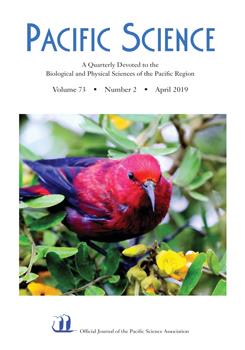Two small Indian mongooses (Herpestes auropunctatus) were livecaptured in 2012 at separate locations on the Hawaiian Island ofKaua‘i, which was previously considered to be free of this invasive species.Genotypes from these two individuals were compared to genotypes of H. auropunctatus from the islands of Hawai‘i (n = 39),O‘ahu (n = 91),Maui (n = 39), and Moloka‘i (n = 19) to determine the island of origin of theKaua‘i individuals. Genotypes were generated fromeach individual using five microsatellite loci. Genetic clustering was estimated by Bayesian inference of spatial clustering of individuals and clustering of groups of individuals. Both analyses separated the samples into three distinct genetic clusters (K = 3).Kaua‘i individuals consistently formed a single cluster with individuals from O‘ahu, whereas Hawai‘i and Maui formed a second cluster, and Moloka‘i was the third cluster.Thus, we conclude that the origin of two H. auropunctatus captured on Kaua‘i wasO‘ahu. All three genetic clusters showed evidence of transportation of mongooses between islands, indicating that sampled islands in the archipelago are capable of acting as both donors and receivers of mongooses.
How to translate text using browser tools
12 April 2019
Using DNA to Identify the Source of Invasive Mongooses, Herpestes auropunctatus (Carnivora: Herpestidae) Captured on Kaua‘i, Hawaiian Islands
Darren J. Wostenberg,
Matthew W. Hopken,
Aaron B. Shiels,
Antoinette J. Piaggio
ACCESS THE FULL ARTICLE

Pacific Science
Vol. 73 • No. 2
April 2019
Vol. 73 • No. 2
April 2019
biosecurity
Hawaiian Islands
introduced predator
microsatellite




